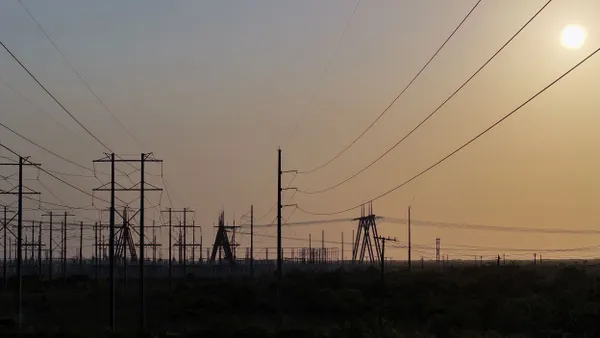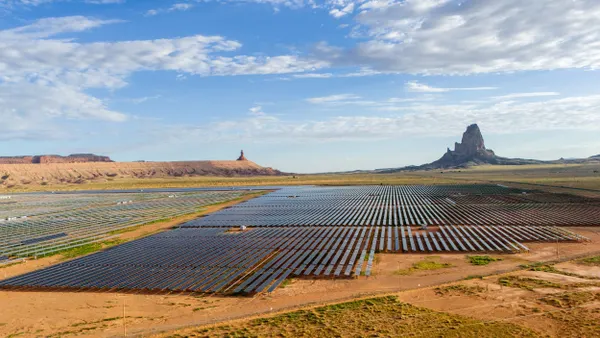Dive Brief:
- Florida Power & Light kicked off the new year by beginning to deliver energy to customers from four new solar power plants, with another four slated to come online later in the first quarter.
- The utility also officially retired the St. Johns River Power Park, the second of three coal plants FPL will be shuttering as it eliminates all coal from its generation mix and brings on more emissions-free power.
- The eight new solar facilities each supply 74.5 MW, totaling almost 600 MW of clean energy on the FPL system.
Dive Insight:
Florida Power & Light may have come to the solar altar a bit late, but the utility appears committed now. Last year the utility announced it would have 2.1 GW of new solar capacity installed on its system within the seven years, and as new projects have come online it has been touting the impacts.
"These advancements will further improve FPL's carbon emissions profile, which is already approximately 30% cleaner than the U.S. industry average," the utility said this week. Simultaneously, a typical 1,000-kWh residential customer bill remains approximately 25% lower than the U.S. average, officials said.
Along with the solar openings, FPL closed the coal-fired St. Johns River Power Park in Jacksonville, Fla., which it co-owned with the city's municipal utility. The 1,300-MW plant was no longer economical to operate, FPL said, as it was one of the "highest-cost generating facilities" to maintain and operate.
Closing the plant is projected to prevent more than 5.6 million tons of carbon dioxide emissions annually and save FPL customers an estimated $183 million. In 2016, FPL shut down the Cedar Bay Generating Plant, another coal plant located in Jacksonville.
Still, FPL faces criticism for its hefty investment in natural gas infrastructure. In 2017, the utility proposed to develop a 1,163 MW gas unit on the sit of its existing Lauderdale facility for $888 million. FPL has built a handful of new gas plants in recent years, each totaling roughly $1 billion.














